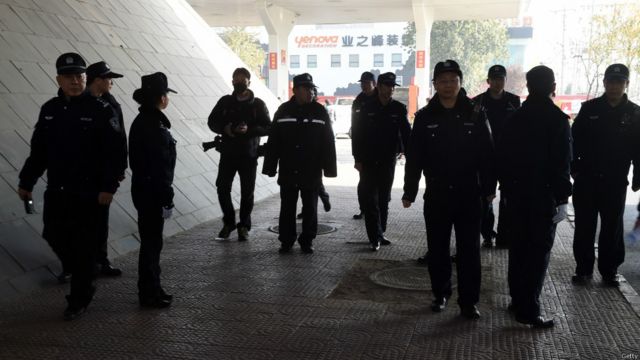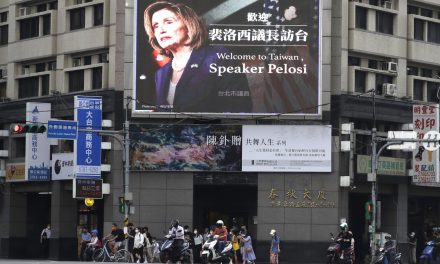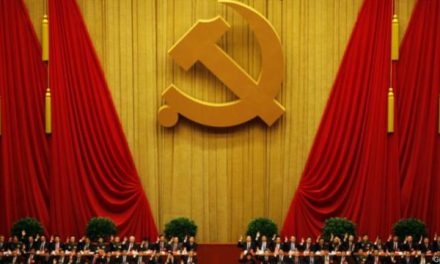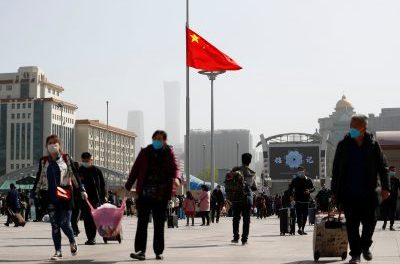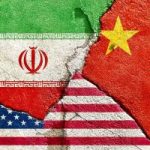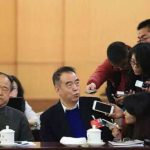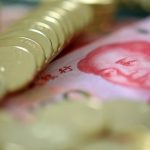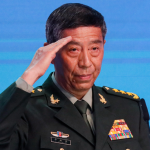By Leslie Fu
Introduction
Does China have a regime characterized by the rule of law? Professor Randall Peerenboom, in his major work on legal reforms in the post-Mao era, China’s Long March Toward Rule of Law, argues that “China seems to be moving toward some form of rule of law, but not the liberal democratic form of rule of law.” 1 In other words, Peerenboom believes that China, since Deng Xiaoping’s leadership, is at least moving towards the “thin” as distinguished from the “thick” sense of the rule of law: “[A] thin theory stresses the formal or instrumental aspects of rule of law – those features that any legal system allegedly must possess to function effectively as a system of laws, regardless of whether the legal system is part of a democratic or non-democratic society, capitalist or socialist, liberal or theocratic.”2 In comparison, the “thick” sense of the rule of law emphasizes liberal democracy and values civil liberties and fundamental freedoms as essential ingredients of it.3 In Peerenboom’s view, although the shortcomings of the Chinese legal system can be expected without a liberal democracy, China is, at the very least, establishing a legal system that emphasizes its formalistic constraint on state power as opposed to a rule not of law but by law, a regiment in which the written law is used as an instrument of the state.4
There can be two distinct questions derived from Peerenboom’s thesis. Does China have a rule of law regime? If not, is it at least moving toward one? This paper argues these two questions entail entirely separate and different analyses. The rule of law is a structural term describing the status quo of law in a society, and the criterion is whether law can be exercised as an independent instrument, superior to the executive. Thus, the question of whether China has the rule of law cannot be properly determined without investigating the entire legal regime. However, the Chinese Communist Party (“the Party”) has incentives to develop certain portions of the legal system while hesitating to reform others. To determine how much progress a society is making in moving toward the rule of law, we should examine individual sections of law because, often, the progress of different laws is not consistent. The paper does not seek to answer the grand question that attempts to characterize China’s legal regime as either the rule of law or rule by law. In this paper, I wish to explore if one specific section of the Chinese legal regime is demonstrating progress toward the rule of law or maintaining its textual obscurity and arbitrary enforcement. To do so, I will examine the history, development, and legitimacy of the crime of “hooliganism” and its successor, “Picking Quarrels and Provoking Trouble.” The short answer is that the crime of “hooliganism” used to be, and that of “Picking Quarrels and Provoking Trouble” still is, obscure, so that the authorities can utilize these laws for social control without any meaningful restraint on the power of the authorities. In other words, by analyzing the existence and implementation of these two laws, I have found the evidence of a rule-by-law approach that persists to the present.
China’s Duality of Rule of Law – the need to examine different legal areas individually
Whether China is moving towards a rule of law or a rule by law regime cannot be properly addressed without reflecting on the approach we adopt. The paper argues that a conclusion regarding the progress of legal development cannot be reached if the scope of the studies attempts to overgeneralize the Chinese legal system as a whole. Granted, China does have a formalistic rule of law regime regarding economic rights. Since the Reform and Opening policy was announced in 1979, the Party has enacted a massive number of laws and regulations aimed at promoting economic activities because these laws provide the ground rules for a newly opened-up market and give reassurance to investors about entering the market.5 The law is not merely symbolic but is also relatively accessible to the common people. In 2015, more than one-third of the 3.34 million civil cases were commercial disputes. Among these commercial disputes, the majority of cases brought involved private-loan cases involving individuals instead of financial institutions.6
The Party indeed has incentives to promote economic prosperity and social stability to minimize challenges to its dictatorship through developing not only policy directives for economic growth but also a functional legal regime to settle commercial disputes and attract economic investment. However, an incentive to legislate economic rights does not translate into an incentive to develop the rule of law as a whole. In other words, the Party may have incentives to establish a legitimate rule of law regime related to economic rights to reinforce social stability and the Party’s monopoly on power while refusing to reform legal vehicles currently useful for social control because it might hinder the Party’s domination. The structure mirrors that in Ernst Fraenkel’s analysis regarding the political system of Nazi Germany, which he denoted by the name “dual state.” For the Nazi government, there existed both the “normative state,” which secured the continuation of legal institutions of economic rights that prolonged the survival of capitalist society, and the “prerogative state,” which used arbitrary violence to ensure the dominance of Nazism.7 In a sense, China’s legal development has a similar dual structure. If making a certain body of law more closely conform to rule of law notions such as clarity, consistency, and stability helps promote social stability for the Party, this is then pursued. However, if the pursuit of the rule of law in certain areas would hinder the Party, it is ignored. Another demonstration of the duality can be found in criminal prosecution. If the case at hand is politically sensitive and “affects social stability, the general public, and the image of the state,” the prized judicial independence free of party influence is thrown out the window.8 Under these circumstances, party leaders are supposed to instruct the responsible judge on “how to handle politically sensitive or influential cases such as those affecting social stability.”9 In sensitive cases, judges often exhaust all means to prevent the disputes from escalating into mass protests and demonstrations by caving into populist demands while using state-owned media as an extended arm to engage in supervision and control of popular opinion.10
The disparate treatment of cases does not end with criminal cases. When dealing with bitter civil disputes, the courts are often too shy to assert the law. In these cases, “judges play the role of mediator first and adjudicator second.”11 In 2009, the SPC released its Third Five-Year Reform Plan that emphasizes “adjudication for people.” To deal with bitter civil cases, “the function of conflict resolution given to law means that it is not viewed as an independent power that operates according to its own rules. Instead, it is given a political goal and the judicial system is tightly entrenched as part of the administrative bureaucracy to promote societal harmony.”12
I will not delve into details of the development of these legal areas as they are not the focus of the paper. But the conclusion derived from these examples is that China’s legal development in different legal areas reflects vastly differing levels of movement toward rule of law principles, depending on the Party’s incentives. Therefore, one cannot overgeneralize regarding the progress of China’s efforts toward the rule of law. This paper analyzes the specific crime of “picking quarrels and provoking trouble,” and demonstrates how it is used as a means of social control for the Party and therefore both undermines the rule of law and instead utilizes law to legitimize the arbitrary use of state power.
How to assess movement toward the rule of law by studying a single law
The criterion to determine if a law is moving inconsistent with the rule of law can be derived from the definition of rule by law. The meaning of “rule by law” is not always certain. It is frequently used as an antithesis to the rule of law, as a “degenerative form of the liberal democratic version of the rule of law, which is frequently found in authoritarian regimes.”13 The law in the rule by law is not viewed as an independent power and constraint that operates on both those in power and the common folk alike according to its own rules. Is is rather a means for authoritarian control that conveys surface legitimacy to authoritarian regimes and brings the illusion of constraints and “rules on others, while continued state-led control over the deployment of these institutions provides opportunity for discretion and flexibility.”14
In Kwai Hang Ng’s paper, “Is China a ‘Rule-by-Law’ Regime?”, he listed several of its defining characteristics, two of which will be converted into criteria for evaluating an individual law. The first relevant and often-occurring characteristic of a rule by law regime is that laws are often obscure. Accordingly, if the law examined by this paper is “unknown or opaque to the public” and therefore is “hardly definite and clear to follow,” it is akin to rule without law that then “produces a façade of law to cover up lawlessness”.15
The second characteristic is arbitrariness.16 In a rule of law regime, the law should be publicly available and be enforced in a predictable manner, as opposed to the arbitrary exercise of power by the authorities. In A.V. Dicey’s definition of the rule of law, the first and foremost characteristic of the concept is to exclude such arbitrariness, which is the opposite of predictability and consistency.17
A related characteristics is the lack of proportionality. Proportionality is often a sign of rule of law and an essential constitutional safeguard, as the concept states that constitutional freedoms can be only limited when such measures are rationally connected to the fulfillment of a proper purpose, such as deterrence of crime.18 However, if the enforcers can utilize catch-all crimes with harsh sentences to arbitrarily target anyone they want, such proportionality is cast aside. Lesser offenses will be punished with harsher sentences that are meant only to deter greater crimes.
In a sense, these two characteristics are codependent and shed light on the two-step method for diagnosing whether an individual law progresses toward or regresses from the rule of law. The first step is to analyze whether the text is obscure. If the textual components of the law are ambiguous and vague, the enforcers will be given the opportunity and capacity to utilize the obscure law for the consolidation of power and other purposes, rather than a proper constraint on all subjects of the law alike. Second, the next question is whether, in practice, the state does, in fact, enforce the law in an arbitrary manner. This paper will attempt to explore the history of “hooliganism” and its successor, “Picking Quarrels and Causing Trouble,” through this lens, and determine whether they reflect the characteristics of obscurity and arbitrary enforcement throughout their development.
Rule of Morality – “Liumang Zui”
The precursor of “picking quarrels and provoking trouble” first appeared in Chinese history as the infamous vague law of “hooliganism,” or, in Chinese, “Liumang Zui.” As per the analysis mentioned, I will first conduct a textual analysis of the crime and then seek to explore how it was actually enforced.
“Hooliganism” was initially codified in Article 160 of the Criminal Law of the People’s Republic of China (“PRC”) of 1979:19
Where an assembled crowd engages in brawls, creates disturbances, humiliates women or engages in other hooligan activities that undermine public order, if the circumstances are flagrant, the offenders shall be sentenced to fixed-term imprisonment of not more than seven years, criminal detention or public surveillance.20
However, the crime existed long before its codification as a catch-all provision to arrest and punish any supposed immoral and anti-social behavior.
The statutory language of “hooliganism” has one element that is largely ignored, and two other notable elements. “An assembled crowd” is often cast aside, so long as the following two elements are satisfied. The first essential element is the actus reus of committing a “hooligan activity.” The origin of the term “hooligan activities” can be found in its literary definition. It should be noted that “hooliganism” is not a direct or accurate translation of its original Chinese equivalent, “Liumang Zui.” The word “Liumang” derives from a derogatory description of the underclass. The literal meaning of “Liu” is “floating” or “breaking away,”while “Zui” means “crime.” Thus, historically, “Liu” in “Liumang” dictates the breaking away from ownership of land. Suffering from homelessness and the lack of a proper profession in an agricultural society, “Liumang” would then indulge in immoral behaviors that disturb social order.21 Thus, one can effectively construe the concept of “Liumang Zui” as criminalizing the status of “Liumang,” the deviants whom the society at large believes would engage in immoral or antisocial behavior.
In short, a “Liumang” or a “hooligan” is someone who gains joy from immoral wrongdoing. A case-in-point that can help drive the definition of “Liumang,” leaving home, is included in a case collection for prosecutors to better identify offenders and for judges to better apply the law. The case’s title is “What Crime is Killing Someone with a Baicai (Chinese cabbage)?”22 The offender, Tang, was a young male worker at a local market tasked with unloading cabbages. After finishing his shift, he would routinely keep a few cabbages and then, during his ride home in the back of the truck, throw cabbages at young women pedestrians to entertain himself. One day, he landed a cabbage on the chest of a young woman who had a heart condition and killed her.23
What charges can be brought against Tang? Tang was not aware of the young woman’s condition and had no intention of murdering her. In fact, according to the analysis included in the case collection, he was not even negligent because the young woman appeared healthy and, no reasonable man would expect the gentle blow of landing a Chinese cabbage would result in death. Thus, intentional murder or negligent manslaughter was not available. The proper charge, according to the case collection, was hooliganism, despite the fact that Tang committed the crime on his own without an “assembled crowd” because: “To gain pleasure, in a public place and on numerous occasions, he scorned the state’s laws and public morality, using cabbages to strike female pedestrians along the road, harassing women, [and] disrupting public order, leading to serious consequences…”24
However, despite the guidance of case collections, in practice, a hooligan mentality is ambiguous and hard to determine. While it is easier in the case of Baicai to consider whether a defendant is taking joy from immoral behavior, in certain fact patterns the determination is open-ended and can give room to manipulation. For example, hooliganism was routinely applied to gang fights. How to determine if someone who engages in a brawl enjoys assaulting other people rather than merely desires to engage in a brawl for other purposes such as territorial conflict? Or how do the authorities distinguish a graffiti artist’s desire to create art and incidentally damaging property from their alleged actual enjoyment of damaging public property? The issue is clearly expressed by one criminologist: “the root [of the problem] is that the word liumang is a common word in politics and society, but it lacks clear legal definition.”25
As illustrated above, the first element of hooliganism, committing hooligan activities, is relatively vague. The second element, “public order,” is a worse offender with respect to obscurity and, to a large extent, contributed to arbitrary criminal justice during the crime’s existence. Per Article 160, punishable hooligan activities are the behaviors that undermine “public order.” As many Chinese legal scholars have explained based on empirical evidence, “public order” in Article 160 meant both the order of public places and the shared principles of life held by the common community.26 Two points can be concluded from this legal explanation. First, the enforcement of Article 160 is dependent upon the authorities’ interpretation of “shared principles of the community.” The vagueness of the term can invite arbitrary enforcement not only through a top-down approach with the institutions of the state defining immorality and targeting a specific section of the population with a grand scheme, but through a bottom-up approach with individual enforcers who assert personal moral agendas which inevitably entail disparate enforcement. Second, private actions can be construed as disturbing “public order.” Enforcers could legitimately prosecute actions taken in private, so long the authorities believed that the acts committed violated the moral principles which they held. The result is the authorities’ overreaching ability to regulate private life according to their own moral standards. Thus, the obscurity derived from the dependency on enforcers’ unreliable personal understanding of moral principles, although it appears to be a downside, is in fact by design.
The purpose of Article 160 can be further demonstrated by tracing its possible origin to Qing law. Traditionally, in the Qing dynasty, law often served as a “moral code” to promote certain aspirational ideals and ideologies, according to Ruskola.27 “As a consequence of the law’s moral nature, it had to be relatively open-ended and flexible; two special devices, catch-all provisions and the analogy, evolved to ensure that any colorable immoral behavior was indeed punishable.”28 Although the criminal code of the PRC had little resemblance to Qing law, the traditional conflation of law and morality ultimately takes root in certain provisions, such as “Liumang Zui,” mirroring the same open-endedness and vagueness, “provid[ing] law enforcers with the technical capacity … to use the law for their own ethical, or unethical, ends, even when those ends are opposed to the underlying morality of the law.”29 Thus, this vagueness served the Chinese Communist Party (“CCP”) and was utilized as an effective means of social control. Given that the non-distinctiveness of the term “hooliganism” could have invited arbitrary enforcement, the next question is whether the authorities indeed used it for arbitrary purposes. The answer is yes. The Strike Hard campaign of 1983 best exemplifies “Liumang Zui’s” social- control capacity in terms of regulation of sexual relations. In the late spring of 1983, the “Campaign to Strike Hard Blows Against Serious Criminal Offending” was launched by the then-leader of the Party, Deng Xiaoping. Fearing that the opening of the economy starting in 1979 would attract Western ideas that could potentially induce support for social liberalism, the campaign was designed as a show of force to maintain “social order.”30 On September 2, 1983, the National People’s Congress passed the “Decision of the Standing Committee of the National People’s Congress Regarding the Severe Punishment of Criminals Who Seriously Endanger Public Security,” which increased the potential sentence for “ringleaders of criminal hooligan groups” to death.31
Despite the increasingly more draconian punishment, the Party did not extend the effort to clarify the vague definition of the crime to limit the scope of its application. For example, despite the lack of explicitly defined sexual offenses in the Criminal Law of 1979, many sexual behaviors, such as premarital sex, sexual relationships with multiple partners, and homosexuality, were prosecuted under “Liumang Zui.”32 The catch-all provision, “other hooligan activities,” was interpreted to include alleged sexual deviation because the concept of “public order” was understood to include the moral principles of the community – principles that could be violated in private as well as in public, and whose violation in private could still have serious societal consequences.”33
While it is true that both Article 160 and the new amendment of 1993 emphasize that a charge of hooliganism requires showing severe harmful consequences,34 in practice, what counts as severe harms often appeared fuzzy. The enforcers can either manipulate the definition of severity to include immoral behaviors that give rise to no actual harm but violate the community’s social norms or make up facts to aggravate the charges. As a result, some prosecuted offenses were trivial, for example, holding dance parties with lights off and using obscene language.35
An extreme example is the case of Hui Liming.36 In May 1983, Han Tao, a past acquaintance of Hui Liming, approached Hui and invited him to Ma Yanqin’s dance party, which was routinely organized at Ma’s home. At the time, there were four attendees, including one of Ma’s two daughters. On September 9, 1983, all past attendees of Ma’s dance parties were arrested. The three organizers were charged as the principals of crimes and hooligan-ring leaders. Ma was convicted for “refusing to enter a proper profession, routinely organizing dance parties for ‘Liumang,’ seducing young men and women, having improper sex with more than ten people, and forcing her own daughters into prostitution.” The charges were based on extreme exaggerations rather than facts. Ma was portrayed as a modern-day siren who lured young men and women away from their moral purity. Nonetheless, Ma, along with the other principals of the crime, was sentenced to death. Hui, as an accomplice to Ma’s crime, was sentenced to 17 years. He was eventually released in 2000 and attempted to appeal more than 20 times, to no avail.37
The case above was by no means an isolated incident. In the case of criminalizing premarital sex, selective enforcement deriving from enforcers’ personal moral values was emphasized. Despite the lack of an official stance on premarital sex, the PRC still extended efforts to enforce premarital abstinence in the 1980s as security patrols were organized in urban parks to “arrest unmarried couples caught in compromising situations.”38 Yet, given the high value placed on traditional female chastity, law enforcers were more likely to view female “transgression” as a punishable offense. As a result, law enforcers tend to pursue female offenders more than male offenders.39
Similarly, despite the lack of laws explicitly criminalizing homosexuality, many men engaging in same-sex relationships were arrested under the catch-all provision of hooliganism because homosexuality was considered immoral. Most were charged under “Liumang Zui,” and their sentences frequently exceeded the statutory maximum of seven years.40
In sum, the regime of “hooliganism” or “Liumang Zui” essentially was a manifestation of rule by law and was necessarily dependent on the morality of the enforcer because of its textual vagueness. In response, in 1984, the Supreme People’s Court (“SPC”) issued a judicial interpretation, titled “Several Questions About the Specific Application of Laws in Handling Hooligan Cases,” to attempt to distinguish legal immoral behaviors from illegal immoral behaviors and to distinguish hooliganism from other crimes such as sexual harassment.41 Nonetheless, the clarification effort was unsuccessful as the Strike Hard campaign continued. Eventually, it became clear to the general public that, under the regime of “Liumang Zui,” it was almost impossible to distinguish legal but “immoral” behavior from illegal behavior. Paired with persistent social norms of gender hierarchy and homophobia, the seemingly neutral text of the criminal code gave rise to the open-endedness and flexibility that eventually empowered law enforcers to nullify the claimed egalitarian spirit of a communist legal regime and enabled them to use the law as a means of social control to tackle supposed immoral behavior that individual law enforcement opposed at the time. Furthermore, relying on personal moral compasses harmed the law’s legitimacy in the long run, once the frenzy of “Strike Hard Blows” subsided. In retrospect, legal scholars dubbed hooliganism a “pocket crime,” a metaphor for its open-endedness and the fact that so many different “wrongdoings” can be stuffed into a pocket.42
To curb the backlash, on March 14th, 1997, the new criminal code was passed and hooliganism was abolished and divided into several crimes, including brawling, prostitution, the crime of insulting a corpse, molesting, and “picking quarrels and provoking trouble.” 43 Does “picking quarrels,” as the successor of hooliganism, retain its vagueness and arbitrary enforcement?
“Picking quarrels and provoking trouble,” a continuation of “hooliganism”
The current crime of “picking quarrels and provoking trouble” is codified in Article 293 of the Criminal Code of 1997:
Whoever undermines public order with anyone of the following provocative and disturbing behaviors is to be sentenced to not more than five years of fixed-term imprisonment, criminal detention, or control: (1) willfully attacking another person and the circumstances are bad; (2) chasing, intercepting, or cursing another person, and the circumstances are bad; (3) forcibly taking away, demanding, or willfully damaging or seizing public or private property; and the circumstances are serious; (4) creating a disturbance in a public place, causing serious disorder. 44
Does “picking quarrels and provoking trouble” also undermine the rule of law? First, is the text of Article 293 vague and open-ended in ways that are similar to hooliganism? Second, in practice, are the authorities enforcing the crime of “picking quarrels” arbitrarily?
V(a). Textual obscurity of “Picking quarrels and provoking trouble”
The answer to the first question is yes. It is worth noticing that the translation of Article 293 is not entirely accurate and can potentially mask its obscurity. In Article 293 Sections (1) and (3), the English translated version includes the requirement of “willfully,” which emphasizes intentionality. The mens rea requirement in the original version is “Suiyi” or “Renyi,” emphasizing the at-will and ad libitum randomness of the wrongdoings.To dissect “Renyi,” its first aspect indicates recklessness more than willingness because the offender does not have a specific target. In addition, the motivation for the offending is the pleasure derived from the wrongdoing itself. Thus, the mens rea requirement of “picking quarrels” does not shift away from the requirement of hooliganism. On June 8, 2005, the SPC issued a judicial interpretation, “Notice by the Supreme People’s Court on Opinion of the Supreme People’s Court on the Application of Laws for the Trials of Criminal Cases Involving Robbery or Seizure,” to affirm the implicit mens rea requirement that requires a similar hooligan mentality that derives joy from immoral or criminal behaviors.45
To further consolidate the understanding of “suiyi” or “renyi,” in 2013, in “Interpretation of the Supreme People’s Court and the Supreme People’s Procuratorate on Several Issues concerning the Application of Law in the Handling of Criminal Cases of Picking Quarrels and Making Trouble,” the SPC attempts to distinguish “picking quarrels and provoking trouble” from intentional assault. “Where an actor commits any act under Article 293 of the Criminal Law by making trouble on the excuse of any incidental conflict or dispute in daily life, it shall be determined as the crime of “picking a quarrel and making trouble”.46
However, the 2013 judicial interpretation also gives an exception to waive the mens rea requirement if the crime “disrupt[ed] social order”, which is another vague term in need of clarity. Without clarification, it is not clear whether the hurdle to satisfying this exception is as high as an act leading to riots, or as low as merely catching people’s attention online and causing them to argue. As we shall see, the threshold, such as it is, is the latter. Thus, despite the repeated attempts at clarification, the determination of the mental state required for conviction under Article 293 is far too vague to be enforced consistently. This ambiguity has given the authorities at present day the same difficulty as defining a hooligan mentality was before. The open-endedness is exacerbated by the exception first allowed by the 2013 judicial interpretation. For instance, in 2018, Ping Wentao, a tourist at Shengtang Scenic Area, wrote his own name on three monuments built for the tourist site. Historically, it is almost a custom for many Chinese tourists to carve or write their name and “dao ci yi you (I was here)” while traveling. However, Ping’s wrongdoings were posted online and he was eventually charged with Article 293(3) for “damaging or seizing public or private property.”48 Yet, it is unclear whether Ping possessed the mentality of “suiyi” that prompted him to randomly damage property at will for pleasure rather than the mentality of keeping the carving as a memento and targeting one specific property. His conviction was justified because of the 2013 judicial interpretation’s exception to the mens rea requirement if the crime committed has “disrupt[ed] social order.”49 How did three pieces of graffiti wreak havoc on social order? It’s because his crime went viral online, igniting a wave of rage with the trending hashtag “Ping Wentao owes Hangzhou an apology.”50 Accordingly, the mens rea requirement was waived for his conviction.
In addition the statute’s text includes the open-ended qualifying phrase “the circumstances are serious,” “the circumstances are bad,” and “serious disorder.” These terms do not have clear legal definitions. The SPC attempted to clarify the element of seriousness in its 2013 judicial interpretation by listing a few circumstances that qualify as serious.51 However, the document itself does not limit the scope of Article 293 meaningfully because it has several catch-all exceptions.
For example, under Article 293(3), for the circumstance to be serious, one has to “(1) forcefully take private or public property more than 1000 yuan, or randomly damage public or private property worth more than 2000 yuan, or; (2) repeatedly forcefully take private or public property, or randomly damage public or private property, causing severe negative social impact or; (3) repeatedly forcefully take or damage property of mental health patients, the disabled, the homeless, the elderly, the pregnant, causing severe negative social impact, or; (4) causing psychotic disorders or suicide, or; (5) severely affecting others’ work, life, production or daily operation, or; (6) other severe situations.”52 Despite listing these specific situations in which damaging another’s property would count as a serious situation, the SPC provides a catch-all exception in the end. The flexible exception mirrors the exception to the mens rea requirement: if the authorities consider the crime to have “severe social consequences,” both the mens rea requirement and the severity requirement can be cast out the window.
It is unclear under what circumstances the exception would be invoked and counted as severe social impact. For example, can a trivial crime be considered severe if it is known by a large number of people? In the case of Ping Wentao, for example, his crime had “severe” consequences because it was made viral via social media.53 Another example is the use of Article 293 to target petitioners who wish to issue complaints and suggestions through the official channels of petitioning. Can a trivial disturbance such as “xin fang” or “petitioning” be considered to have a “severe negative social impact” because it damages the authority and credibility of the government or the Party? Evidently, the understanding that “xin fang” should be considered a severe disturbance is widespread, which I will expand on in the following section on the status quo for Article 293 enforcement.54
Therefore, because the text lacks a legal definition for severe social impacts and “severe situations,” which are the exceptions that can significantly lower the burden of proof for a prosecution, the authorities can assert violations of Article 293 in a catch-all manner. The government is not well equipped to enforce Article 293 consistently and, indeed, does not need to do so. In a sense, “picking quarrels and provoking trouble” is structured similarly to hooliganism and shares its textual ambiguity. Thus, Article 293 offers the authorities the ability to utilize the statute as a catch-all means of social control. However, do the authorities in fact enforce the crime of “picking quarrels and provoking trouble” arbitrarily?
V(b). Arbitrary enforcement of “picking quarrels and provoking trouble”
As discussed before, the characteristics of arbitrary enforcement can be divided into two parts. The first question relates to proportionality. If a single act violates multiple articles, can the authorities apply the one with the highest sentencing provision? Second, if Article 293 is catch-all in nature, are the authorities, in fact, using the statute to target political dissidents and other personnel who are deemed to be a threat to the Party?
V(b)(1) Lack of proportionality
Thus, the first step is to determine whether there is lack of proportionality. The short answer is that, although “picking quarrels and provoking trouble” does not punish dance-party organizers by death like hooliganism back during the Strike Hard era, it is still plagued by the lack of proportionality. Currently, the base punishment of Article 293 is prison time for less than 5 years.55 However, during the 11th National People’ Congress, the NPC passed an amendment providing that if the offender “severely disturbed social order,” the punishment can be extended to more than 5 years and up to ten years.56 Because “severe disturbance” does not have a legal definition, it is unclear when the enhanced punishment is applicable.
Again, take the case of Ping Wentao. Ping had scribbled seven red Chinese characters, including his name, on a famous stone stele inside a photo-taking site beside the West Lake.57 Other than Article 293, there are two other potential Articles which pertain to this kind of situation. The first Article is the crime of intentionally destroying property. According to article 275, “[w]hoever intentionally destroys public or private property and the amount involved is quite large and the other circumstances are serious is to be sentenced to not more than three years of fixed-term imprisonment, criminal detention, or a sentence of a fine; when the amount involved is huge and the other circumstances are particularly serious, the sentence is to be not less than three years but not more than seven years of fixed-term imprisonment.”58
The second is the crime of intentionally destroying cultural relics. According to Article 324, “[w]hoever intentionally destroys precious cultural relics under state protection or designated cultural relics of state institutions for protecting major cultural relics and provincial-level cultural relics protection departments shall be sentenced to not more than three years in fixed-term imprisonment or criminal detention, and may in addition or exclusively be sentenced to a fine; or when the circumstances are serious, not less than three years and not more than 10 years of fixed-term imprisonment, and may in addition be sentenced to a fine”.59
Both Article 275 and Article 324 are designed for more culpable crimes. According to the Supreme People’s Procuratorate’s explanation of the Criminal Code, Article 275 is aimed at punishing repeated offenses and the destruction of more valuable properties, requiring a damage of more than 5000 yuan as compared to Article 293’s requirement of 2000 yuan.60 Article 324, on the other hand, aims at punishing the damage to relics of “major historical and cultural sites protected at the national level” or “the provincial level” or the damages to “nationally protected cultural heritage site.”61
In the case of Ping Wentao, the prosecution cannot satisfy the requirements of either of the more serious crimes. Ping’s crime happened within one trip and therefore cannot be characterized as a repeated crime satisfying Article 275. In addition, the damage did not exceed 5000 yuan, which would justify the invocation of Article 275. Furthermore, the damaged stele was not a nationally or provincially protected cultural relic. The damaged site is thus not a “nationally protected cultural heritage site.” Thus, the authorities had to charge Ping with the lesser crime of “Picking Quarrels and Provoking Trouble.” However, the punishment for the lesser crime, from five years to ten years, is higher than the more specific and more serious charges of Article 275 and Article 324, which are less than three years and from three years to seven years respectively.62
In another example, if the defendant inflicts bodily harm on another person, there are two potential charges which she can potentially face. The first is Article 293, which is the lesser crime of provoking fights and “willfully attacking another person.” However, if the bodily harm is intentionally inflicted and the injuries are serious, Article 234 applies.63
Article 234 naturally places a higher burden on the prosecution. The enforcers need to prove both a mens rea of intentionality and to demonstrate why the injuries suffered are serious. However, the sentencing range provided by Article 234, from 3 years to 10 years, is below the sentencing range of the lesser crime, “Picking Quarrels and Provoking Trouble,” which can lead to sentencing from five years to ten years.64 Thus, the prosecution can and is incentivized to opt for the charge of the lesser crime and still ensure a longer sentence.
The cases above can demonstrate the lack of proportionality ensued from the catch-all flexibility of “Picking Quarrels and Provoking Trouble” and its stringent punishments. The downside is obvious. From a perspective of effective deterrence, if the damage is done to the less valuable property and to the property that is not a historic relic or historic site, the crime should have received less punishment because the social harm is not as severe. If the lesser crime is incurring longer sentences, the greater crime is in fact encouraged, or at least not properly deterred. Still, the enforcers and the courts are given the capacity to punish trivial wrongdoings with a catch-all crime which has a large scope, limited burden of proof, and sentencing even harsher than a more serious crime. Such flexible discretion is an embodiment of the arbitrariness of Article 293.
V(b)(2). Targeting dissidents
The second step in determining whether Article 293 contributes to the arbitrariness of the law is to demonstrate if it is used to punish specific targets to reinforce social control and consolidation of power. The answer is yes. The crime has been utilized to target dissenters both through official channels and unofficial channels, and both protests and online speech.
Petitioners
“Picking quarrels and provoking trouble” has been used to target and suppress petitioners since the 2013 SPC interpretation, which provides for an exception waiving the mens rea requirement if the crime committed “disrupt[ed] social order.” To understand officials’ hostility towards petitioners, we first need to examine the long history of petitioning in China.
Petitioning, also known as “xinfang,” is an official route of vocalizing grievances and complaints in China. It is firmly rooted in the traditional means of seeking justice and broadly defined as “go[ing] past basic-level institutions to reach higher-level bodies, express problems and request their resolution.”65 It survived in the post-1949 People’s Republic of China in the form of “xin,” as in petitioning through letters, and “fang,” as in petitioning through visits. The post-1949 government has established numerous “xinfang” bureaus throughout all Chinese governmental organs and geographic regions. 66 Since the 1990s, the Party has started to develop a web of regulations to govern both petitioners’ practices and the operation of national, provincial, and local Bureaus of Letters and Calls.67
The development of a modern legal system in China over the past decades did not eliminate the practices and institutions of petitioning, which currently “parallel, overlap, and in some cases replace formal legal channels.”68 In principle formal legal channels, referring to courts, procuratorates and administrative regulatory agencies, derive their power from formal law and legal norms. Petitioning, in contrast, derives its influence from the political power of the Party and officials who can personally intervene in and resolve the disputes based on their discretion regardless of the law.69
“Xinfang” includes a wide range grievances and disputes. Some are organized political challenges to the decisions of local officials while others are individual appeals of justice, the grievances over which often contain legally recognizable remedies and complaints. In a sense, it serves the purpose of releasing the steam of tension between the authorities and the citizens generated through the regular governance of an authoritarian government, without conferring unnecessary power and independence on the courts. As one Chinese legal observer explained, “Xinfang – a mechanism originally established to resolve political problems-has gradually evolved into a system of assistance serving as a replacement for the judicial system.”70
However, the incentive to ease necessary tension does not translate to the incentive to address any grievance or complaint of a civil-rights violation. Thus, few petitions are actually addressed. As Minzner noted in his paper, “for individual Chinese petitioners, struggles to present their grievances to higher authorities often sink into a Kafkaesque series of unending visits to government bureau after government bureau. Many petitioners eke out desperate existences for years or decades in the Beijing shantytowns, pursuing their petitions in a cat-and-mouse fashion, subject to deportation or mistreatment by national and local authorities. “71 Statistically, only 0.2% petitioners succeeded according to a 2004 study.72
Local officials’ hostility towards petitioners was exacerbated by the 2005 reform of the “Regulations Concerning Letters and Calls,” which gives the State Bureau of Letters and Calls the power to rank each province and city based on the amount of “unconventional petitioning,” or “feizhengchang xinfang.” Each Letters and Calls Bureau at the provincial and city level also now ranks its own governmental organs according to the number of petitions received.73 In 2008, Interim Provisions of the Ministry of Supervision, Ministry of Human Resources and Social Security, and the State Bureau of Letters and Calls included the “Disciplinary Action for Violations of Discipline in Work involving Written and Oral Petitions,” which further intensified the relationship between local officials and petitioners. Under the new regulation, if a local government cannot succeed in talking down or intercepting petitioners before the petitioners register their official records at the Bureau of Letters and Calls, the recorded petitions will directly affect the ranking of the local government.74
Under such immense pressure from this performance ranking, it is common for local governments to emphasize their carrot-and-stick approach to persuade the petitioners to abandon their efforts through monetary reliefs or through “xunjie,” which describes the practice of bringing an individual to a police station for “educational criticism.”75 If the petitioners cannot be persuaded to back down, local governments usually resort to corrupt means by manipulating the numbers of petitioners of one petition or the geographic locations of the petition.76 The method above is not without cost, owing to the lack of tule of law at higher levels. For instance, in the wave of anti-corruption campaign under Xi’s regime, Xu Jie, the Deputy Director General of the State Bureau of Letters and Calls, was charged with corruption related to faking data and records related to the ranking of petitioning from 2006 to 2013 and was eventually convicted in 2015.77
After 2013, however, the old method of corruption and bribery became obsolete because the authorities started to use the charge of “Picking Quarrels and Provoking Trouble” to deter petitioners. As referenced above, in 2013, the SPC issued an interpretation that significantly lowered the burden of proof to establish “Picking Quarrels and Provoking Trouble” by waiving the mens rea requirement if the crime committed merely “disrupt[ed] social order.” As a result, the authorities can mold Article 293 to target petitioners who “disrupted social order”78 because their visits, although through official channels, are often chaotic, unorganized and sometimes involving the assembly of a large crowd, in one extreme example with more than 100,000 individuals.79
A 2018 study found that “Picking Quarrels and Provoking Trouble” was used to target petitioners 375 times nationwide, spanning 26 provinces.80 Among all 375 cases, only three happened before the new 2013 interpretation and its exceptions, which empowered the local governments to frustrate petitioners’ efforts through criminal prosecutions.81 It is evident that, in these cases, the government considered petitioning to constitute disturbing social order.82
It is commonly understood by local governments that persistent petitioning is inherently disruptive of social order and severe consequences are inevitable as a result.83 Wang Fengyun, a Duolun county villager who traveled to Beijing nine times in five years to petition against an alleged land grab, was detained and charged with “picking quarrels and provoking trouble.” The cost of dissuading Wang’s petition effort was cited by the Duolun county government as evidence of Wang’s “extremely harmful” behavior in court.84 In other words, because petitioning inevitably provokes the authorities to react with dissuasion, the cost of dissuasion is per se evidence of severe social disturbance and grounds for conviction of “picking quarrels and provoking trouble.”
In conclusion, quashing petitioners is one demonstration of the arbitrary enforcement of Article 293. Before 2013, local authorities often offered petitioners monetary relief to prevent official registries of grievances and possessed a mentality of buying peace with money, or “huaqian mai pingan.” However, since 2013, the expanded scope and flexibility of “Picking Quarrels and Provoking Trouble” has been normalized.85 Article 293 has become a routine tool for local governments to use to suppress and deter petitioners.
Protestors
If Article 293 is used to target petitioners who air their grievances through official channels, it is not surprising that it is also used to target protesters who voice their grievances in unofficial assemblies to protest. Thus, many of the offenders of “picking quarrels and provoking trouble” are activists or dissidents who are critical of the government or officials or touch upon sensitive topics like human rights or politics. If the authorities cannot defuse the conflict, they have the incentive to sweep it under the rug by arresting the protesters. A representative example is the use of “Picking Quarrels and Provoking Troublr” to target labor activists.
A byproduct of China’s rapid economic expansion and industrial development is the massive migration of rural labor. In 2000, China alone had an estimated 180 million internal rural migrants working in urban areas.86 The wave of migration did not slow down over time. In 2015, there was a total of 277.5 million migrant workers in China, accounting for 36% of the entire work force.87
The conflict between urban authorities and rural migrants working in cities is often characterized as inevitable because of the unquenched social needs of migrants.88 The exclusion of rural migrants from urban public goods includes but is not limited to: (1) the unavailability of employment in government offices and state-owned enterprises in cities for rural migrants; (2) lack of social insurance and social welfare such as unemployment and health benefits for rural workers;89 (3) and the exclusion of children of migrant families from public school.90
As a result, large-scale labor strikes and protests initiated by grassroots organizers have highlighted labor activism in China in recent years. According to the official data of the Ministry of Public Security (MPS), the total number of “mass incidents” stood at 8,700 in 1993, increased to 32,000 in 1999, surpassed 58,000 in 2003, and eventually reached 87,000 in 2005, 10 times the amount 12 years ago. Although the MPS stopped publishing such data in 2005, foreign reports typically cite a figure of around 80,000 to 10,000 mass incidents per year. Protests involved a variety of themes, from “unpaid wages to land seizures, involving workers, farmers, and other victims who demonstrated resistance to rights encroachment by targeting authorities, employers, or other groups.”91
The number of protests and strikes did not slow down in the most recent decade, although incidents involving more than 100 workers are gradually falling, signaling the decline of manufacturing and factory jobs.92 The decline is also a consequence of the determination of Xi Jinping’s regime to preempt mass protests that can threaten social responsibility.93
One strategy that has been adopted under the Xi administration is to threaten and deter labor activists with charges of “Picking Quarrels and Provoking Trouble.”94 For example, former migrant worker Lu Yuyu collected information regarding public protests and then posted it online. He was arrested and charged with “Picking Quarrels and Provoking Trouble.” The prosecutors cited his blogs as evidence of “spreading misinformation” in court.95
Similarly, recently, Chen Guojiang, who sought fair pay and protections for food-delivery drivers, was arrested and accused of “Picking Quarrels and Provoking Trouble” on February 25, 2021. He was only allowed to see his lawyer after one month in custody. The authorities also deleted his father’s online posts to crowdfund for lawyers’ fees and fellow delivery workers’ petitions to demand his release.
The cases of Lu and Chen are by no means isolated. In another incident, human rights lawyer Wang Yu and her husband Bao Longjun faced charges of “Picking Quarrels and Provoking Trouble” after defending sensitive cases of Uyghur academics on charges of separatism. They were released on bail only after they released a videotaped confession that was circulated on Chinese state-media websites.96 It is not certain whether using the threat of convictions to elicit confession is an official policy. However, in practice, many of the activists who are charged with “Picking Quarrels and Provoking Trouble” have been released on bail on condition of confessing.97
Dissidents online
Thus far, we have discussed how the authorities charge protesters with Article 293 to deter mass gatherings. In addition to targeting protestors and dissidents, as evident from the history of prosecution, the authorities use “Picking Quarrels and Provoking Trouble” even when the targets have not engaged in any physical actions. The authorities can and have used it to regulate and punish online speech as well.98
In 2013, the SPC and SPP issued the “Interpretation of the Supreme People’s Court and the Supreme People’s Procuratorate on Several Issues concerning the Specific Application of Law in the Handling of Defamation through Information Networks and Other Criminal Cases”.99 According to the interpretation, if the alleged online speech was used to hurl insults, to terrorize others, to manufacture and spread misinformation, or to cause others to spread misinformation to the extent of “disturbing social order,” “Picking Quarrels and Provoking Trouble” is applicable.100 In essence, under this explanation, social media is regarded as public space and public order has to be maintained. Misinformation has the potential to disrupt the order online. Hence, utilizing the same vague term, “disturbing social order,” the SPC and SPP expanded the scope of Article 293 to cover online speech.101
Another factor in need of explanation is what and who defines misinformation. People often have different interpretations of the same incident based on their inherently different perspectives. It is inevitable that some of those interpretations are different from those of the authorities. In addition, it is almost impossible to cover every aspect of a topic in a social-media post. Thus, the following questions arise: Does misinformation within the meaning of Article 293 include an interpretation different from the perspective of the enforcers? Does misinformation within the meaning of Article 293 include speech that does not adequately explain every perspective? Both of the questions are left unanswered by the judicial interpretation, leaving room for arbitrary enforcement.
A prominent example is the case of Zhang Zhan, one of several freelance citizen journalists who traveled to Wuhan at the beginning of the pandemic to cover the outbreak of COVID-19. During her coverage, she visited a hospital where she filmed beds filling the hallway and a crematory. In addition, she interviewed local residents about their opinions of the government’s response. In May 2020, after a few months of the dispatches of the interviews on Wechat, Twitter, and YouTube, she disappeared. It was later revealed that she was secretly arrested, charged with “picking quarrels and provoking trouble” for spreading misinformation online and sentenced to four years in prison.102 She was accused of “maliciously spreading” misinformation about Wuhan to “numerous audiences and causing severe impacts.”103
The trial of Zhang demonstrates the open-endedness of the definition of “misinformation.” According to the official narrative, China’s efforts against COVID-19 are a story of success.104 In a sense, it was the truth until the disease exploded anyway in late 2022, as domestic infections up to that point had been limited to sporadic outbreaks. However, even before it was not the same as claiming the consequences of the outbreaks had been entirely eliminated. For instance, in one interview conducted by Zhang Zhan with a Wuhan local three months into the pandemic, after the outbreak there was fairly contained, the interviewee angrily related how the government forced the narrative of gratitude upon the communities and how his family could not afford essential food during the aftermath.105 Evidently, emphasizing the negative aspects and painting a picture opposite to the official narrative is considered, and even defined to be, spreading “misinformation.” Yet, determining what constitutes the official narrative is entirely subjective. A famous idiom in Chinese is often used to denote the multifaceted dimensions of facts: a ridge seems like a peak if viewed from the side. Here, if the Party insists that you are looking at a ridge, any claim that it may be a peak is criminalized by Article 293.
Conclusion
The enforcement of “Picking Quarrels and Provoking Trouble” is arbitrary for two reasons. First, as a lesser crime that punishes less culpable offenses and is easier to prove, Article 293 offers the possibility of longer sentences than several more serious and more specific crimes. It lacks proportionality. Second, it is used to punish dissenters, either implemented through the official channel of “xinfang” or through organizing unofficial protests and stirring up events in real life or spreading information online. To demonstrate the rule by law of Article 293, I have illustrated its textual ambiguity, which gives birth to its capacity as a catch-all crime to punish dissent and assert social controls. In discussing its enforcement, I have demonstrated how it is indeed used for these purposes.
In the final section of this paper, I wish to explore several possible solutions to the issues presented at hand. The first potential solution that might appear as the lowest-hanging fruit to Western audiences is to abolish the law through independent judicial constitutional review. However, China does not have independent constitutional review. In December 2008, the SPC dealt a fatal blow to the case of Qi Yuling, a 2001 case that invoked “the fundamental right to education that Qi Yuling should enjoy in accordance with the constitutional provisions”106 and once gave legal scholars hope of constitutionalism in China, by claiming that it was “no longer applied.”107 No one can accurately predict the future of constitutionalism in China. However, under Xi’s regime, it is fair to say that a mechanism of constitutional review that is robust enough to invalidate “Picking Quarrels and Provoking Trouble” is not likely to be developed. In 2013, the Propaganda Department of the Chinese Communist Party explicitly designated “judicial independence” as a politically incorrect term.108 In 2017, Chief Justice Zhou, the head of the Supreme People’s Court of China, in a speech to a group of legal officials in Beijing, said that “we should resolutely resist erroneous influence from the West: ‘constitutional democracy,’ ‘separation of powers’ and ‘independence of the judiciary’”.109 While there are certain gestures that in principle give some opportunity for on potential progress, such as renaming the National People’s Congress Law Committee as the Constitution and Law Committee, the committee never truly functions and is more likely designed to grant the Party the title of socialist constitutional supremacy without actually practicing it.110
Without the ability to abolish “Picking Quarrels and Provoking Trouble” through judicial action, another compromise solution is for the prosecutors to emphasize the mens rea requirement of Article 293 and to limit the definition of “public order” so that they can refrain from blanketing various situations with the application of Article 293. Although as noted above the mens rea requirement that parallels the hooligan mentality will still yield obstacles to consistent enforcement because the term cannot be unambiguously defined, at least the prosecutors will not be able to use the statute to target protestors and other political dissidents. Similarly, if “public order” is limited to the order of physical public places such as a public park, prosecutors would be unable to use Article 293 to target speech on the internet. The Procuratorate indeed has certain incentives to do so. Partially abandoning its attempt to completely smother pocket crimes would contribute to the restoration of the credibility of China’s legal institutions. In addition, such efforts could help to ensure proportionality and reduce more serious crime through optimized deterrence based on the severity of offences.
The last possible option is legislative action. If there is an incident that provokes public outrage, the National Peoples’ Congress might voluntarily abolish “Picking Quarrels and Provoking Trouble,” or at least cripple its ability to be used against pocket crime. Similar patterns have occurred in the past. In the case of the “abolition of custody and repatriation” (C&R), a migrant worker Sun Zhigang in Guangzhou died from physical abuse suffered during his detention under the C&R system.111 The incident provoked massive media coverage and demands for punishment and reform, leading to a new regulation replacing the C&R measures.112 However, prospects for this solution are significant limited. The voluntary reform was the result of immense public backlash and media coverage of Sun Zhigang, and Hu Jintao and Wen Jiabao’s desire to decorate the new leadership with the badge of openness.113 In other words, the leadership’s consideration was political, instead of driven by the constitutionality and legality of C&R measures. Without political motivation, appealing to the highest authorities often meets with resistance. For example, in 2003, detainee Zhang Bin under the re-education through labor system was beaten to death.114 His death, however, did not generate the same level of media coverage and public attention because re-education through labor, at the time, was considered an essential vehicle of social control. The Party leaders “reportedly barred the Chinese media from covering Hu’s constitutional review proposals and warned Hu not to publicize his efforts.”115
With three possible remedial approaches presented, the next question is whether there will ever be meaningful reforms to the pocket crime of “Picking Quarrels and Provoking Trouble.” The answer ties back to the larger argument which the paper is attempting to address; is China moving towards the rule of law? To determine whether a society has the rule of law, one needs to look over the entire legal regime to make a structural conclusion. To determine how much progress a society is making towards the rule of law, however, we should examine individual sections of the law because often the movements towards the rule of law are not consistent. This paper has demonstrated that the crime of “Picking Quarrels and Provoking Trouble” in contemporary China still resembles a rule-by-law approach, despite the fact that China has demonstrated certain intentions and dedications to reform through abolishing the crime of “hooliganism” and reeducation through labor. In short, China’s efforts and progress towards the rule of law are inconsistent among different sections of the law, with “Picking Quarrels and Provoking Trouble” as a lagging tail.
Ultimately, whether China will ever consistently move toward the rule of law and in particular ever address the pocket crime of “Picking Quarrels and Provoking Trouble” comes down to whether the Party has the intention of relinquishing its control over means of social control. If the party does not possess such an intention, any reform aimed at “Picking Quarrels and Provoking Trouble” would be meaningless. In 2013, the Party abolished re-education through labor.116 However, around the same time, the SPC drastically expanded the scope of “Picking Quarrels and Provoking Trouble” to target petitioners117, protestors118 and dissidents online119 as per the previous analysis. In other words, if the Party does not want to restrict its own means of exercising social control, even if every other criminal law is clearly defined and impervious to arbitrariness, the Party will still leave “Picking Quarrels and Provoking Trouble” in its current state as a back door. Alternatively, even if the Party cripples the flexibility and open-endedness of “Picking Quarrels and Provoking Trouble” as a pocket crime, it will eventually construct another tool that serves a similar purpose. It will retain the essence of “Picking Quarrels and Provoking Trouble” but with another name.
References:
1. Albert H.Y. Chen, China’s long march towards rule of law or China’s turn against law?, 4 The Chinese Journal of Comparative Law 1, 13 (2016).
2. Id. at 12
3. Chen, supra.
4. Id. at 14 -15.
5. Kwai Hang Ng, Is China A “Rule-by-Law” Regime?,67 Buff. L. Rev. 793, 806 (2019)).
6. Id. at 807.
7. Hubertus Buchstein, Political science and democratic culture: Ernst Fraenkel’s studies of American Democracy, 21 German Politics and Society 48, 53 (2003).
8. See Xin He, Pressures on Chinese judges under Xi, SSRN Electronic Journal 49, 67 (2021).
9. Id. at 51.
10. Kwai Hang Ng, Is China A “Rule-by-Law” Regime?, 67 Buff. L. Rev. 793, 801 (2019)
11. Ng, Is China A “Rule-by-Law” Regime?, supra, at 799.
12. Id. at 800.
13. Id. at 794.
14. Id
15. See id. at 803
16. Id at 805.
17. Id.
18. Ariel L. Bendor & Tal Sela, How proportional is proportionality?, 13 Int’l J. Const. L. 530, 531 (2015).
19. Zhongguo Renmin Gongheguo Xingfa (中华人民共和国刑法)[Criminal Law of the People’s Republic of China] (promulgated by Standing Comm. Nat’l People’s Cong. Gaz., July 1, 1979, effective July 1, 1979) art. 160.
20. Id.
21. See Ding Guo, Liumang Zui Ruhe Cong Xingfa Zhong Xiaoshi De, Shenzhen Tequ Bao (2021).
22. Harold Tanner, The offense of hooliganism and the moral dimension of China’s pursuit of modernity, 1979–1996, 26 Twentieth-Century China 1, 12–13 (2000).
23. Tanner, supra.
24. Id.
25. Id. at 23-24.
26. Id. at 13.
27. Teemu Ruskola, Law, sexual morality, and gender equality in Qing and Communist China, 103 The Yale Law Journal 2531, 2531 (1994).
28. Id.
29. Id. at 2564.
30. Heather Worth et al., ‘There was no mercy at all’: Hooliganism, homosexuality and the opening-up of China, 34 International Sociology 39, 49 (2018).
31. Quanguo Renmin Daibiao Dahui Changwu Weiyuanhui Guanyu Yancheng Yanzhong Weihai Shehui Zhian de Fanzui Fenzi de Jueding (全国人民代表大会常务委员会关于严惩严重危害社会治安的犯罪分子的决定)[Decision of the Standing Committee of the National People’s Congress Regarding the Severe Punishment of Criminals Who Seriously Endanger Public Security] (promulgated by Standing Comm. Nat’l People’s Cong. Gaz., Sep. 2, 1983, effective Sep. 2, 1983).
32. See Worth et al, supra note 30.
33. See Tanner, supra note 22, at 8.
34. Id. at 19.
35. Id.
36. Yang Shiyang, “Liumang Dan” Shi Zenyang Liancheng De, 27 Zhengfu Fazhi 30, 30-31 (2009).
37. Yang Shiyang, “Liumang Dan” Shi Zenyang Liancheng De, 27 Zhengfu Fazhi, supra.
38. See Ruskola, supra note 27, at 2554.
39. Id.
40. Id. at 2561, 2562.
41. Zuigao Renmin Fayuan Zuigao Renmin Jianchayuan Guanyu Dangqian Banli Liumang Anjian Zhong Juti Yingyong Falv De Ruogan Wenti De Jieda De Jieshi, Fashi (最高人民法院、最高人民检察院关于当前办理流氓案件中具体应用法律的若干问题的解答), (promulgated by Sup. People’s Ct. Gaz., Sup. People’s Proc. Gaz., Nov.02, 1984, effective Nov. 02, 1984) http://fgcx.bjcourt.gov.cn:4601/law?fn=chl011s043.txt&dbt=chl (China).
42. See Jian Xiaohao, Koudai Zui Fanchou Lun, 4 Guangdong Kaifang Daxue Xuebao 35 (2020).
43. Zhongguo Renmin Gongheguo Xingfa (中华人民共和国刑法)[Criminal Law of the People's Republic of China] (promulgated by Standing Comm. Nat’l People’s Cong. Gaz., Mar. 14, 1997, effective Mar. 14, 1997).
44. Zhongguo Renmin Gongheguo Xingfa (中华人民共和国刑法), art. 293 (1997).
45. Zuigao Renmin Fayuan Yinfa <Guanyu Shenli Qiangjie, Qiangduo Xingshi Anjian Ruogan Wenti De Yijian> DeTongzhi(最高人民法院印发《关于审理抢劫、抢夺刑事案件适用法律若干问题的意见》的通知), (promulgated by Sup. People’s Ct.Gaz., June 8, 2005, effective June 8, 2005).
46. Id.
47. Zuigao Renmin Fayuan Zuigao Renmin Jianchayuan Guanyu Banli Xunxin Zishi Xingshi Anjian Shiyong Falv Ruogan Wenti De Jieshi (最高人民法院、最高人民检察院关于办理寻衅滋事刑事案件适用法律若干问题的解释), (promulgated by Sup. People’s Ct. Gaz., Sup. People’s Proc. Gaz., Apr. 28, 2013, effective Jul. 22, 2013). See Jian Xiaohao, Koudai Zui Fanchou Lun, 4 Guangdong Kaifang Daxue Xuebao 35 (2020).
Zhongguo Renmin Gongheguo Xingfa (中华人民共和国刑法)[Criminal Law of the People’s Republic of China] (promulgated by Standing Comm. Nat’l People’s Cong. Gaz., Mar. 14, 1997, effective Mar. 14, 1997).
48. “Qian Hangzhou Yige Daoqian De Ping Wentao,” Yangshi Xinwen (2018).
49. Zuigao Renmin Fayuan Zuigao Renmin Jianchayuan Guanyu Banli Xunxin Zishi Xingshi Anjian Shiyong Falv Ruogan Wenti De Jieshi (最高人民法院、最高人民检察院关于办理寻衅滋事刑事案件适用法律若干问题的解
释, supra note 49.
50. “Qian Hangzhou Yige Daoqian De Ping Wentao,”supra note 50.
51. Zuigao Renmin Fayuan Zuigao Renmin Jianchayuan Guanyu Banli Xunxin Zishi Xingshi Anjian Shiyong FalvRuogan Wenti De Jieshi (最高人民法院、最高人民检察院关于办理寻衅滋事刑事案件适用法律若干问题的解释,
supra note 49.
52. Id.
53. “Qian Hangzhou Yige Daoqian De Ping Wentao,”supra note 50.
54. Wang Qinghua, Tongguo Sifa De Shehui Zhili: Xinfang Zhongjie yu Xunxin Zishi, 1 Zhejiang Shehui Kexue 49, 54(2018).
55. Zhongguo Renmin Gongheguo Xingfa (中华人民共和国刑法), art. 293 (1997).
56. Amendment (VIII) to the Criminal Law of the People’s Republic of China (promulgated by Standing Comm Nat’l People’s Cong. Gaz., Feb. 25, 2011, effective by May 1, 2011).
57. Yang Jie, DRIFTERS DETAINED FOR GRAFFITI ON MONUMENTS IN HANGZHOU CHINADAILY.COM.CN, https://global.chinadaily.com.cn/a/201810/09/WS5bbbeeeca310eff303281256.html (last visited Dec 10, 2021).
58. Zhongguo Renmin Gongheguo Xingfa (中华人民共和国刑法), art. 324 (1997).
59. Id.
60. Zuigao Renmin Jianchayuan, Gonganbu Guanyu Gongan Jiguan Guanxia De Xingshi Anjian Lian Zhuisubiaozhun De Guiding (yi) (《最高人民检察院、公安部关于公安机关管辖的刑事案件立案追诉标准的规定(一)), (promulgated by Sup. People’s Proc. Gaz., June 25, 2008, effective June 25, 2008).
61. Id.
62. Zhongguo Renmin Gongheguo Xingfa (中华人民共和国刑法), art. 234 (1997).
63. Id.
64. Id.
65. Carl F. Minzner, Xinfang: An Alternative to Formal Chinese Legal Institutions, 42 STAN. J. INT’L L. 103, 104 (2006)
66. Id.
67. Id.
68. Id. at 104, 105.
69. Id. at 105.
70. Id. at 106.
71. Id. at 104.
72. Id. at 106.
73. Wang Qinghua, Tongguo Sifa De Shehui Zhili: Xinfang Zhongjie yu Xunxin Zishi, 1 Zhejiang Shehui Kexue 49, 54 (2018).
74. Id.
75. Qinghua, supra.
76. Qinghua, supra.
77. Guojia Xinfangju Yuan Fujuzhang Huoxing Shisan Nian, Xinhuawang (last visited Dec 10, 2021).
78. See Wang, supra note 56, at 54.
79. See Minzner, supra note 67, at 104.
80. See Wang, supra note 56, at 54.
81. Id.
82. Id.
83. 67 Chen, supra
84. Philip Wen, RARE DISCLOSURE SHEDS LIGHT ON PLIGHT OF CHINA’S AGGRIEVED PETITIONERS REUTERS (2017), https://www.reuters.com/article/us-china-parliament-petitioners/rare-disclosure-sheds-light-on-plight-of-chinas-aggrieved-petitioners-idUSKBN16931T (last visited Dec 11, 2021).
85. See Wang, supra note 56.
86. RACHEL MURPHY, LABOUR MIGRATION AND SOCIAL DEVELOPMENT IN CONTEMPORARY CHINA, 4 (2010).
87. Migrant workers and their children, CHINA LABOUR BULLETIN (2021), https://www.clb.org.hk/content/migrant-workers-and-their-children (last visited Dec 11, 2021).
88. Introduction: Labour migration and social development in China, LABOUR MIGRATION AND SOCIAL DEVELOPMENT IN CONTEMPORARY CHINA 12 (2008).
89. Farzana Afridi, Sherry Xin Li & Yufei Ren, Social Identity and inequality: The impact of China's Hukou System,SSRN ELECTRONIC JOURNAL 7 (2012).
90. Erik Mobrand, Politics of cityward migration: An overview of China in comparative perspective, 30 HABITAT INTERNATIONAL 261, 270 (2006).
91. See Chan, supra note 92, at 463.
92. The shifting patterns of labor protests in China present a challenge to the union, CHINA LABOUR BULLETIN (2020), https://clb.org.hk/content/shifting-patterns-labour-protests-china-present-challenge-union (last visited Dec 11, 2021).
93. Id.
94. Chun Han Wong & Josh Chin, CHINA CHARGES LABOR ACTIVIST FOR ‘PICKING QUARRELS’ THE WALL STREET JOURNAL (2017), https://www.wsj.com/articles/china-charges-labor-activist-for-picking-quarrels-1498305709 (last visited Dec 11, 2021).
95. Id.
96. Case history: Wang Yu, FRONT LINE DEFENDERS (2017), https://www.frontlinedefenders.org/en/case/case-history-wang-yu (last visited Dec 11, 2021).
97. Id
98. Zuigao Renmin Fayuan Zuigao Renmin Jianchayuan Guanyu Banli Liyong Xinxi Wangluo SHishi Feibang Deng Xingshi Anjian Shiyong Falv Ruogan Wenti De Jieshi(最高人民法院、最高人民检察院关于办理利用信息网络实施诽谤等刑事案件适用法律若干问题的解释), (promulgated by Sup. People’s Ct. Gaz., Sup. People’s Proc. Gaz., Sep. 5 2013, effective Sep. 10, 2013).
99. Id.
100. Id.
101. Id.
102. Id.
103. 张展成首个武汉疫情中遭公开审判的公民记者,因”炒作疫情”被判四年, BBC NEWS 中文, https://www.bbc.com/zhongwen/simp/chinese-news-55464308 (last visited Dec 11, 2021).
104. Al Jazeera, CHINA SLAMS ‘IRRESPONSIBLE’ UN COMMENTS ON JAILED JOURNALIST CORONAVIRUS PANDEMIC NEWS |AL JAZEERA (2021), https://www.aljazeera.com/news/2021/11/20/china-un-jailed-journalist-zhang-zhan-covid (last visited Dec 11, 2021).
105. Supra note 108.
106. Zhu, Guobin, Constitutional Review in China: An Unaccomplished Project or a Mirage?, 43 Suffolk U. L. Rev.625, 646 (2010)
107. Id. at 648-649.
108. Wei Cui, Jie Cheng & Dominika Wiesner, Judicial Review of government actions in China, SSRN ELECTRONIC JOURNAL 38 (2018).
109. Michael Forsythe, CHINA’S CHIEF JUSTICE REJECTS AN INDEPENDENT JUDICIARY, AND REFORMERS WINCE THE NEW YORK TIMES (2017), https://www.nytimes.com/2017/01/18/world/asia/china-chief-justice-courts-zhou-qiang.html?_ga=2.95938780.1362828810.1639166553-971581108.1639166553 (last visited Dec 11, 2021).
110. Keith J. Hand, Constitutional supervision in China after the 2018 amendment of the PRC Constitution: Refining the narrative of constitutional supremacy in a socialist legal system, SSRN ELECTRONIC JOURNAL 20 (2019).
111. Keith J. Hand, Citizens engage the constitution: The sun zhigang incident and constitutional review proposals in the People’s Republic of China, BUILDING CONSTITUTIONALISM IN CHINA 221, 223 (2009).
112. 67 Id. at 223, 225.
113. Id. at 227.
114. Id. at 233.
115. Id. at 234.
116. China: Fully abolish re-education through Labor, HUMAN RIGHTS WATCH (2020), https://www.hrw.org/news/2013/01/08/china-fully-abolish-re-education-through-labor (last visited Dec 11, 2021).
117. See Wang, supra note 55.
118. Chun Han Wong & Josh Chin, CHINA CHARGES LABOR ACTIVIST FOR “PICKING QUARRELS’ THE WALL STREET JOURNAL (2017), https://www.wsj.com/articles/china-charges-labor-activist-for-picking-quarrels-1498305709(last visited Dec 11, 2021).
119. Zuigao Renmin Fayuan Zuigao Renmin Jianchayuan Guanyu Banli Liyong Xinxi Wangluo SHishi Feibang Deng Xingshi Anjian Shiyong Falv Ruogan Wenti De Jieshi(最高人民法院、最高人民检察院关于办理利用信息网络
实施诽谤等刑事案件适用法律若干问题的解释), supra note 102.

